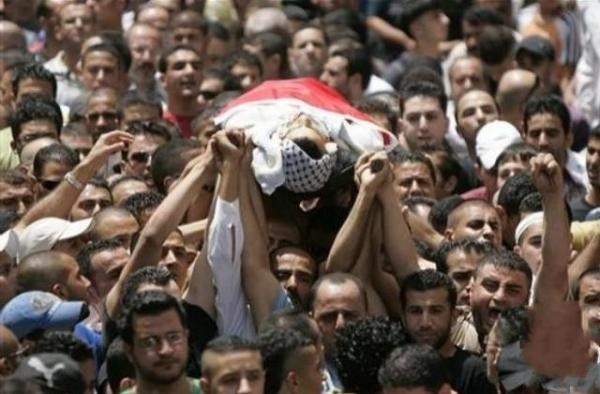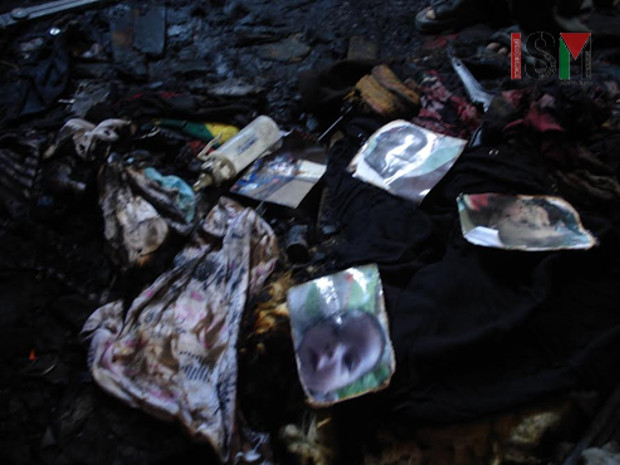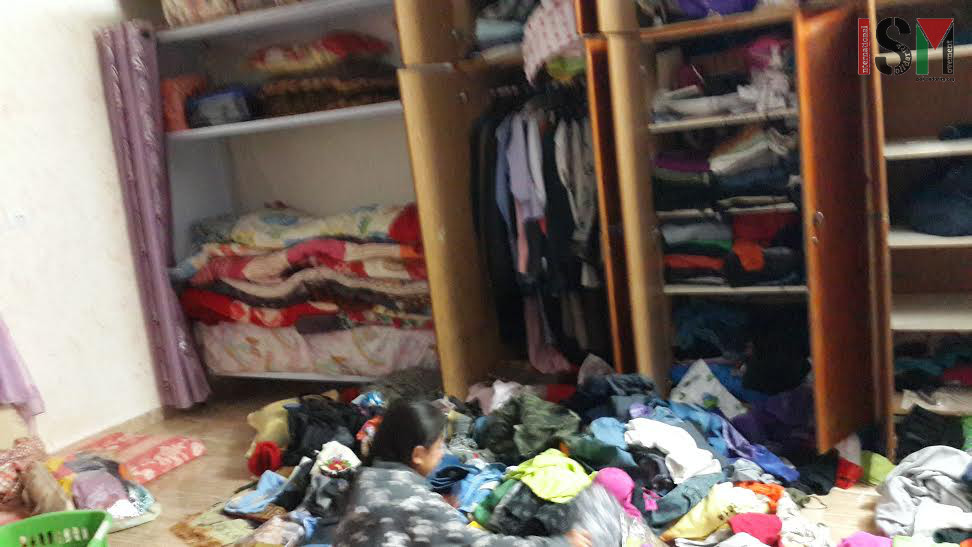Tag: Nablus
-
UN report: 3 Palestinians killed, 92 displaced in a week
22nd August | The Palestinian Information Center | Occupied East Jerusalem OCCUPIED JERUSALEM, (PIC)– A report issued by the UN Office for the Coordination of Humanitarian Affairs (OCHA) showed the escalation of Israeli violations against Palestinian civilians in their occupied territories during 11-17 August, 2015. OCHA revealed that Israeli forces shot and killed two Palestinians,…
-
Illegal settlers burn infant alive in attack of a Palestinian house in the village of Duma
1st August 2015 | International Solidarity Movement, Nablus Team | Duma, Occupied Palestine At 2:30 in the morning, on Friday July 31st, a group of settlers came into the village of Duma to set fire to a family’s home with molotov cocktails while the family was sleeping. According to the village’s mayor, Abu Alam, the…
-
Nablus family home suffers brutal Israeli night raid
15th July 2015 | International Solidarity Movement, Nablus Team | Awarta, Occupied Palestine On Sunday, July 12, at 1:30 am, a group of 40 Israeli soldiers came into the village of Awarta circling and raiding the home of 22 year old Izzat Qawariq right before the family was preparing to go to sleep. His cousin…



